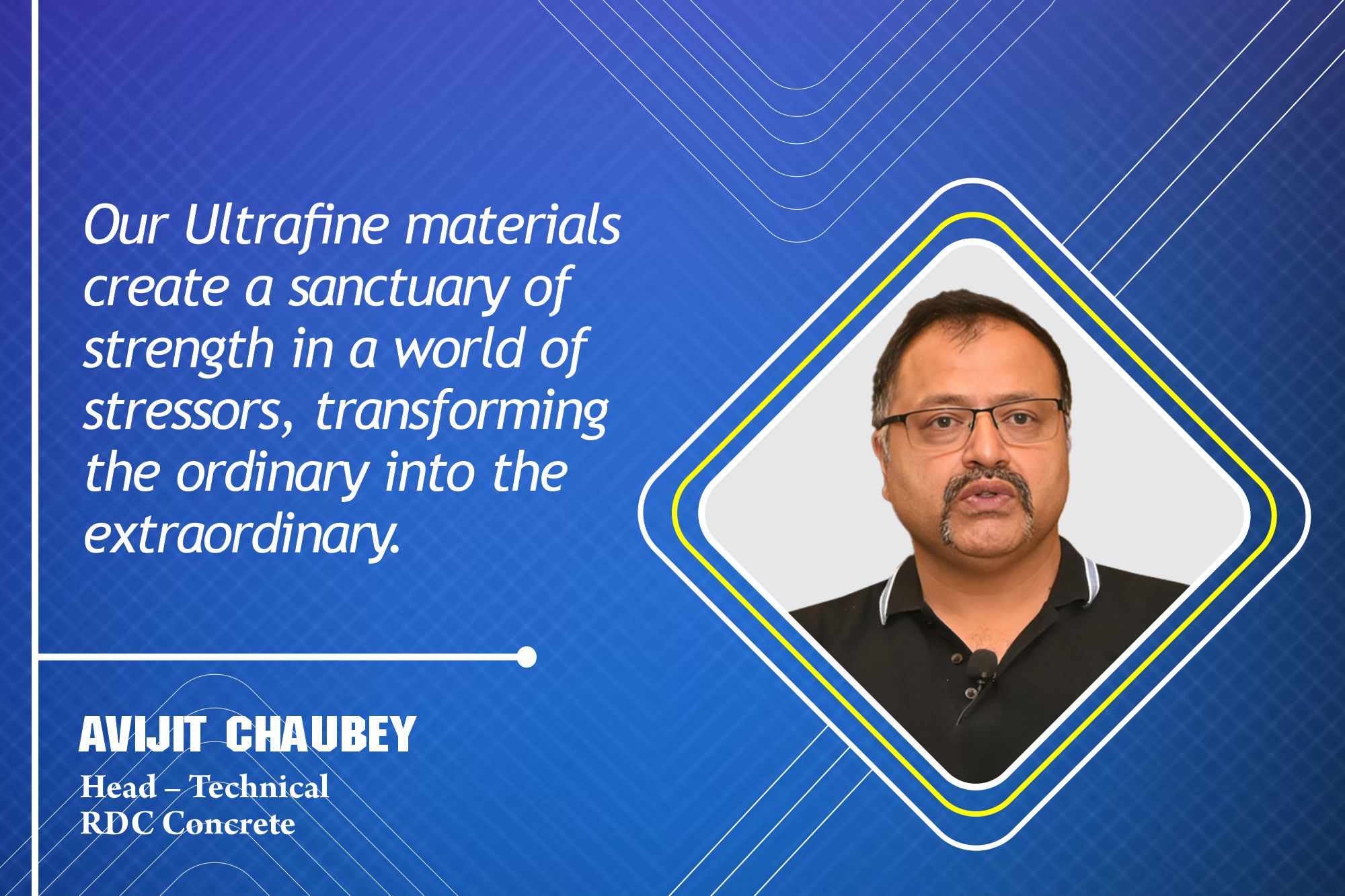Compatibility of Ultrafine materials in construction practices
By Staff Report | November 21, 2024 2:58 pm SHARE

Ultrafine materials transform construction by boosting concrete’s resistance to environmental stresses, increasing resource efficiency, and redefining our approach to structural integrity and building sustainability.
How are emerging technologies enhancing building materials’ durability against environmental stressors?
For civil engineers, durability and structural integrity are critical in building, especially resource efficiency and structure lifespan. The important environmental stressors include sulphate attacks that cause ettringite formation and cracking, chloride-induced reinforcement corrosion, the alkali-silica reaction (ASR), and abrasion caused by water flow, traffic, or high-temperature fluctuations.
While no single answer exists, we’ve made considerable strides in adopting Supplementary Cementitious Materials (SCMs) such as GGBS, Fly Ash, Microsilica, and Metakaolin as effective replacements for traditional Portland cement. Historically, SCMs had slower response times than OPC, but new technologies have improved durability and building speed. Ultrafine SCMs, created using advanced grinding and classification procedures, decrease or nullify the effects of environmental stressors while preserving or even boosting development speed, fulfilling the needs of today’s fast-paced building sector.
How are sustainability and energy efficiency integrated into your products or solutions?
Our Ultrafine materials technology represents a substantial advancement in incorporating sustainability and energy efficiency into our solutions. Understanding the overall energy footprint of construction materials, including manufacturing and transportation, is critical to this approach. Traditional GGBFS, while effective, frequently loses environmental benefits due to high transportation costs, particularly for locations away from the source of GGBFS. Our Ultrafine GGBFS, which is ten times finer, tackles this by providing a 1:4-5 replacement ratio rather than the normal 1:0.8, thereby significantly enhancing economic feasibility and sustainability.
Ultrafine materials require far less energy to create and transport than regular Portland Cement (OPC), resulting in cheaper costs when combined with OPC, as opposed to using OPC or locally obtained SCMs alone. This strategy also promotes long-term sustainability by providing immediate cost savings while increasing a structure’s lifespan by 50 to 70 years.
By lowering cement concentration in mixtures, we reduce the carbon footprint of cement manufacturing and transportation emissions, balancing short-term economic gains with long-term sustainability goals and signalling a shift in how we approach sustainable construction.
What recent material science advancements have improved the performance and lifespan of your products?
Recent material science improvements have considerably increased the performance and longevity of our solutions, addressing concrete’s susceptibility to environmental degradation. The key innovation is using Ultrafine Materials Technology to optimise concrete microstructure. Filling microscopic gaps between cement particles results in a denser, less porous matrix, which improves durability.
This method improves packing density, lowers cement content while retaining strength, and promotes sustainability. It also increases water tightness and chemical resistance, reducing damage from chemical attacks. Furthermore, Ultrafine particles expedite strength growth, making concrete more durable, requiring less maintenance, and lasting longer in difficult conditions.
How do you ensure your product integrates smoothly with existing infrastructure while maintaining compatibility and longevity?
Integrating our Ultrafine materials with current infrastructure has been a top goal during product development. These materials are designed to be compatible with existing concrete manufacturing processes, reducing disturbance to ongoing projects. However, their small size necessitates careful management in typical batching plants.
To address this, we have optimised plant settings to handle Ultrafine materials efficiently without requiring major new investments. Our technical support team helps customers make these changes, and we design specific integration strategies for each site. We also offer specialised training for plant operators to ensure a smooth transition and reap the benefits of increased durability, performance, and sustainability without disrupting current operations.
Cookie Consent
We use cookies to personalize your experience. By continuing to visit this website you agree to our Terms & Conditions, Privacy Policy and Cookie Policy.




































-20240213125207.png)

























